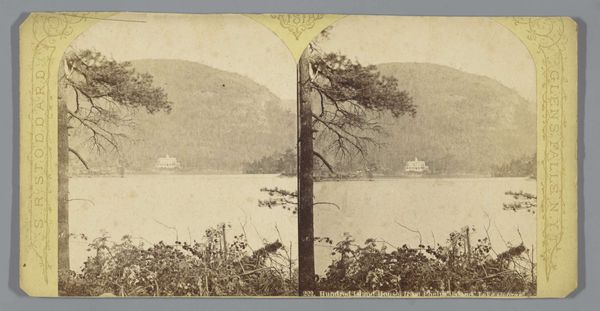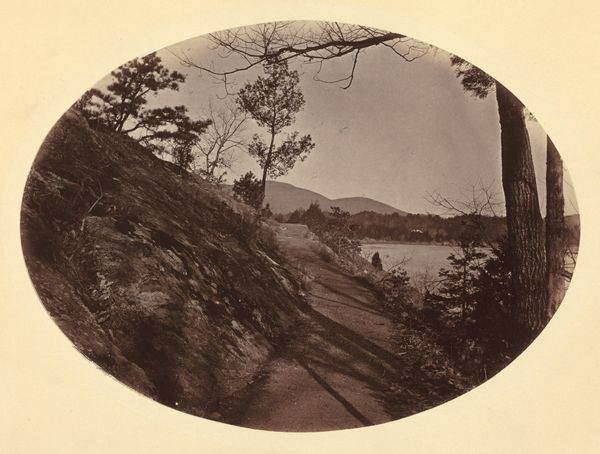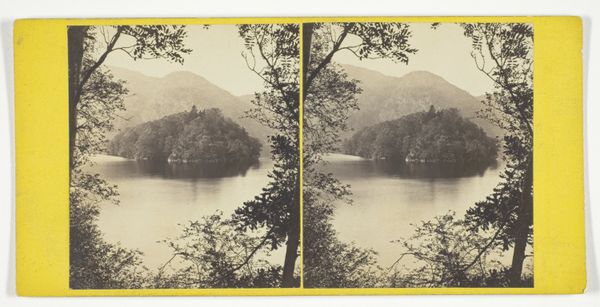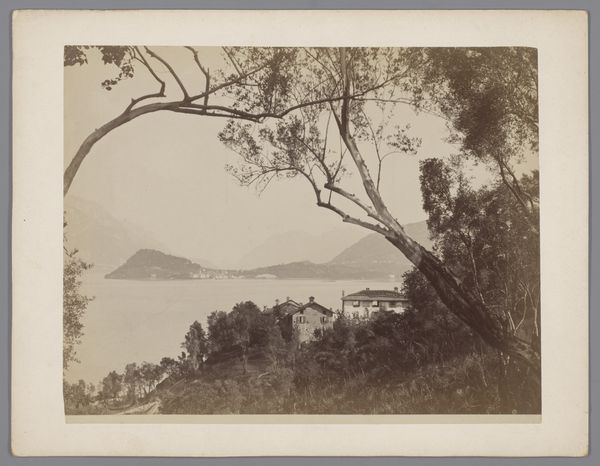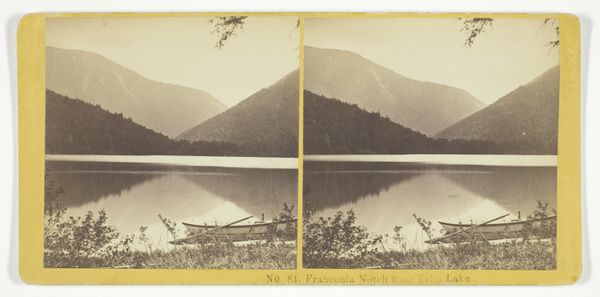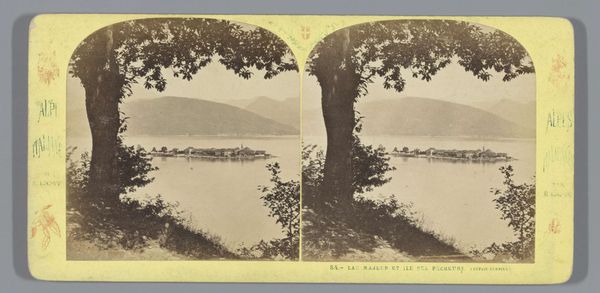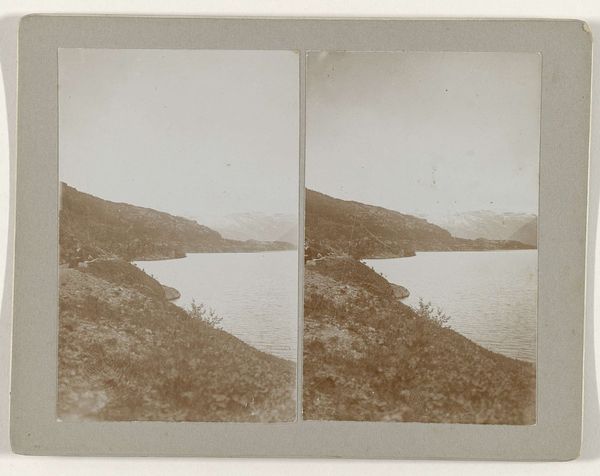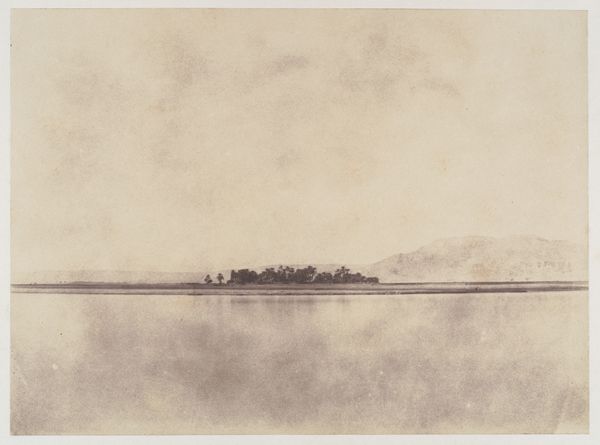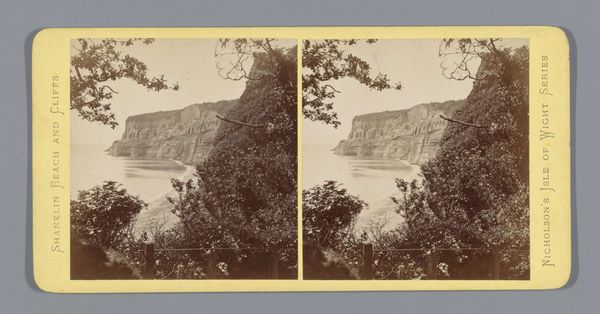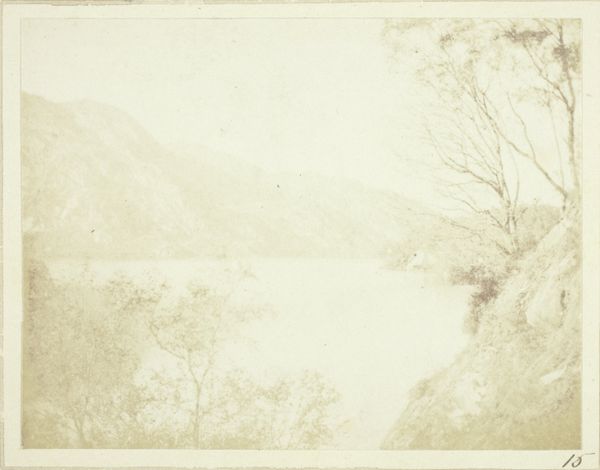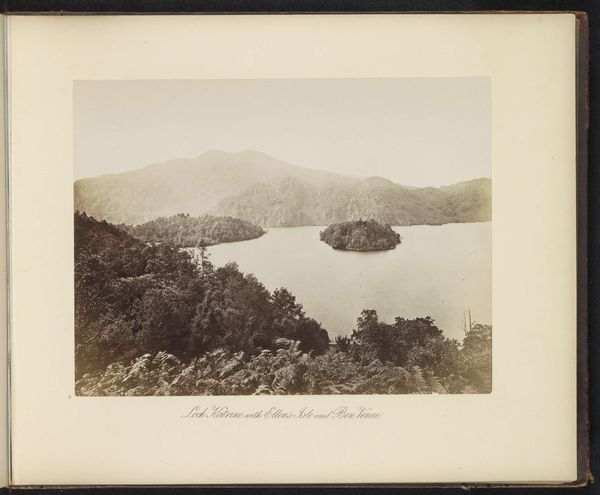
Dimensions: 10.3 × 7.9 cm (each image); 10.7 × 17.8 cm (card)
Copyright: Public Domain
Curator: What strikes me immediately is the sense of stillness. The monochrome tones and the careful composition create a feeling of quiet contemplation. Editor: Exactly. We're looking at an albumen print dating from the late 19th century, titled "Eagle Lake, Mt. Desert, Me.," by B. Bradley. Given the time period and location, the image likely captures a deliberate attempt to portray the American landscape through a very specific lens. Think about the conservationist movements gaining traction then. Curator: And how the composition itself reflects that. Notice the careful placement of the trees, framing the lake and mountains in the distance. It guides the viewer's eye, creating a sense of depth and perspective that evokes the picturesque aesthetic—a visual language associated with colonialism. Editor: Yes, the formal elements work together beautifully, creating a sense of spatial harmony that aligns with theories on visual hierarchy. The way the light falls on the water, the contrasting textures of the foliage, they all speak to a conscious artistic choice. Curator: And who had access to these landscapes? These scenes become signifiers of class and privilege. The sublime, wild beauty of nature is being aestheticized, controlled even, and that is inherently connected to socioeconomic structures and environmental exploitation. Editor: That's a vital point. Focusing just on formal values does risk erasing these historical and social dimensions. We have the albumen print here, which flattens everything out in a fascinating way; yet it gives visual priority to natural order in keeping with theories of perfection. Curator: Looking closely, I am left wondering: whose gaze is this fulfilling and perpetuating? These landscape images shaped cultural understandings about ownership, access, and belonging, especially relating to industrial developments on indigenous land. Editor: I agree. This image does open a door to wider discussions about cultural history and theory—ideas that may go well beyond initial impressions about pictorial unity. Curator: Ultimately, examining it through the lenses of environmental and postcolonial studies enhances our awareness of its historical context, challenging any idea that its beauty exists innocently outside that complicated framework.
Comments
No comments
Be the first to comment and join the conversation on the ultimate creative platform.
